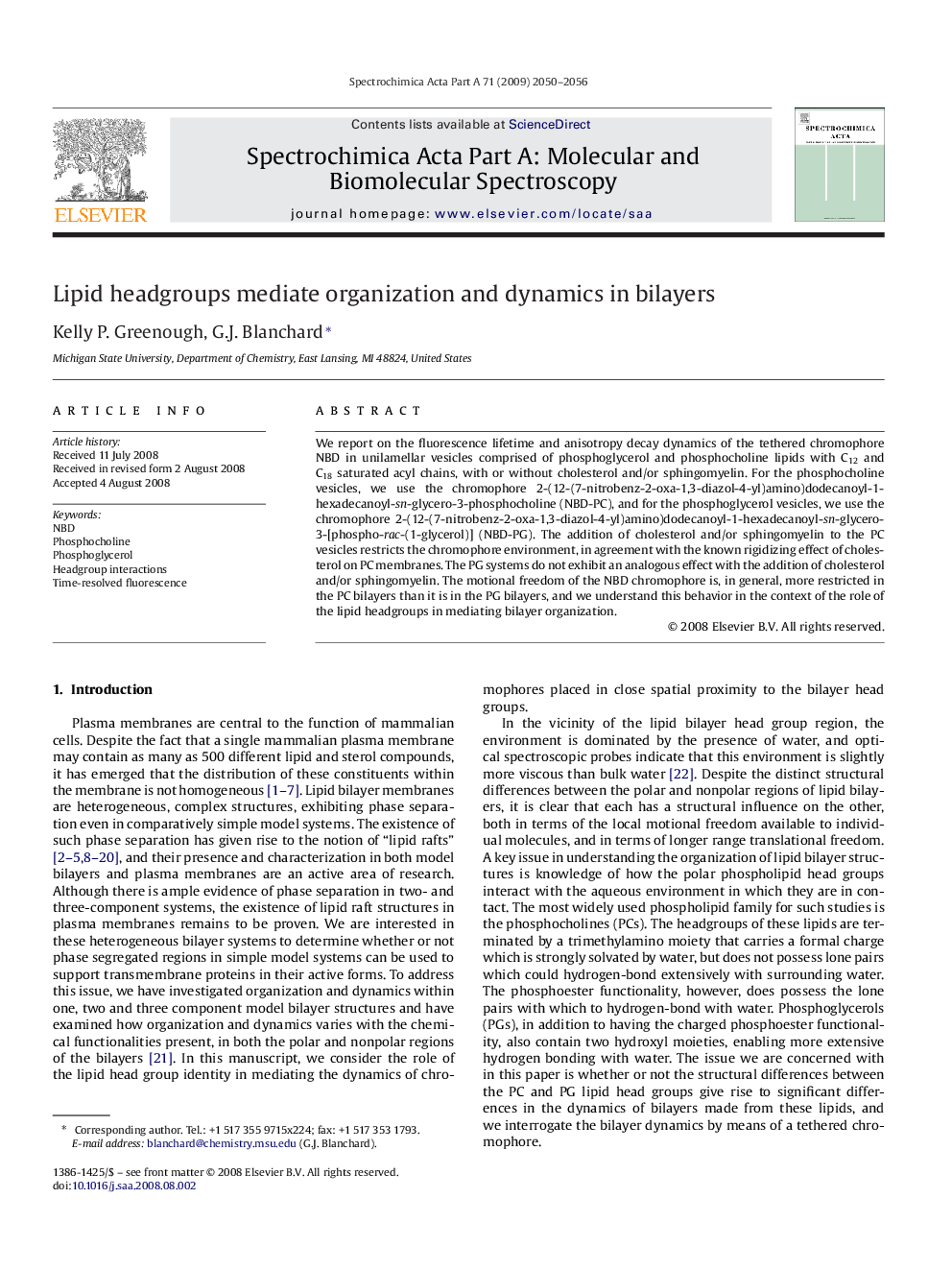| Article ID | Journal | Published Year | Pages | File Type |
|---|---|---|---|---|
| 1235014 | Spectrochimica Acta Part A: Molecular and Biomolecular Spectroscopy | 2009 | 7 Pages |
Abstract
We report on the fluorescence lifetime and anisotropy decay dynamics of the tethered chromophore NBD in unilamellar vesicles comprised of phosphoglycerol and phosphocholine lipids with C12 and C18 saturated acyl chains, with or without cholesterol and/or sphingomyelin. For the phosphocholine vesicles, we use the chromophore 2-(12-(7-nitrobenz-2-oxa-1,3-diazol-4-yl)amino)dodecanoyl-1-hexadecanoyl-sn-glycero-3-phosphocholine (NBD-PC), and for the phosphoglycerol vesicles, we use the chromophore 2-(12-(7-nitrobenz-2-oxa-1,3-diazol-4-yl)amino)dodecanoyl-1-hexadecanoyl-sn-glycero-3-[phospho-rac-(1-glycerol)] (NBD-PG). The addition of cholesterol and/or sphingomyelin to the PC vesicles restricts the chromophore environment, in agreement with the known rigidizing effect of cholesterol on PC membranes. The PG systems do not exhibit an analogous effect with the addition of cholesterol and/or sphingomyelin. The motional freedom of the NBD chromophore is, in general, more restricted in the PC bilayers than it is in the PG bilayers, and we understand this behavior in the context of the role of the lipid headgroups in mediating bilayer organization.
Related Topics
Physical Sciences and Engineering
Chemistry
Analytical Chemistry
Authors
Kelly P. Greenough, G.J. Blanchard,
